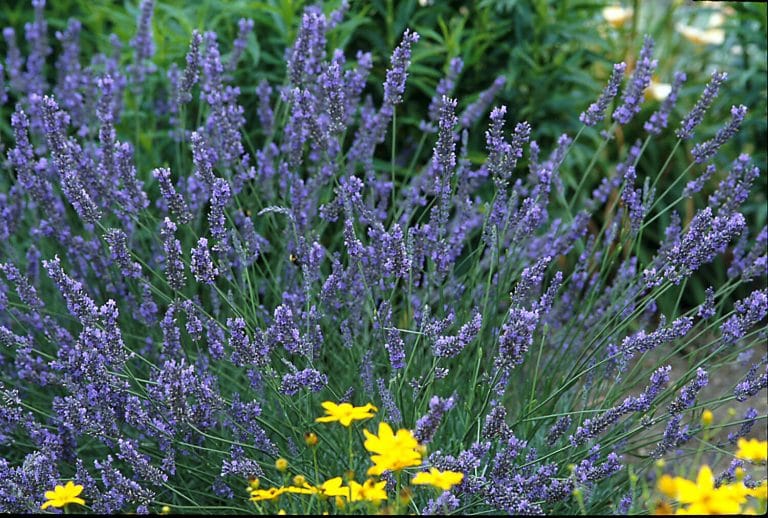
The difference between serving tea made from herbs you grow yourself and herb tea from a bag “is like the difference between serving your guests a good vintage wine instead of some cheap plonk,” says Conrad Richter, president of Richters Herbs in Goodwood, Ont. “Herbal teas packed in bags are usually powdered,” he explains, so they’re “almost never as flavourful as whole herbs.”
But whether you’re using freshly picked herbs to brew or steeping those you’ve dried for winter, there are a few rules to keep in mind. The first one is, keep it basic. At least initially. “In the same way that mixing too many colours of paint gives you an uninspiring grey colour, using too many herbs in the teapot results in an uninspiring tea,” says Richter. He suggests using one or two herbs first, then branching out.
Historically, tea made from single herbs was a called a “simple.” Richter’s recommendations for simples include spearmint or peppermint, the traditional tea for tummy upsets. Another favourite is lemon balm combined with lemon verbena; adding a few red clover flowers offers a dash of colour and nutrients.
When you’re ready for more complex brews, start with a base and add herbs for flavour, colour and fragrance. You’re aiming for a pleasing overall blend of flavours rather than a tea where one herb dominates. A good base is five parts mint to three parts lemon verbena. To this you might add rugosa rose petals, a pinch or two of lavender and perhaps a scented geranium leaf. A few cornflower or pot marigold petals can be thrown in for colour.
While making tea with a tea bag takes the guesswork out of the process, making tea with herbs is more experimental. There are no hard and fast rules as to how much to use or how long to let steep. A loose guideline is to use a large handful of fresh herbs for a two-cup teapot. When using dried herbs, start with one tablespoon (15 mL) per cup and adjust according to personal taste and the strength of your particular herbs.
Avoid brewing herbal tea in a metal pot: choose ceramic or glass instead. Richter prefers glass because it adds to the ritual. “My mother would set the teapot in front of guests to brew,” he recalls. “And it was nice to watch the red clover blossoms and lemon balm leaves—two favourites—swirl and settle for the 10 minutes or so it took to brew.”
While some tea aficionados are happy to let their herbs steep for 10 minutes or even longer, others prefer a shorter brew time, which prevents the tea from becoming bitter. Again, this depends on individual tastes and the herbs themselves.
Herbs for home brews
Herbal teas can be made using fresh or dried leaves, flowers, or seeds. If you’re using fresh herbs, bruise or lightly tear the leaves to encourage the release of aromatic oils into the boiling water. Harvest leafy herbs (anise hyssop, mint, verbena) before the plant comes into flower and harvest herbal flowers (roses, calendula, cornflower) when the flower first opens.
To retain flavour for winter tea, air dry herbs until crisp and store in a cool, dark place. Though the following herbs can be used either fresh or dried, lemon balm, rose petals, cornflower and calendula are better fresh.
Herbs
Anise hyssop (Agastache foeniculum) – Licorice-mint flavour
Lemon verbena (Aloysia triphylla) -Delicious tea herb; not hardy below 10°C
Chamomiles (Use flowers only)
Roman (Chamaemelum nobile) – A strong, fresh apple scent
German (Matricaria recutita) – Calming; don’t combine with mint
Mints and classic tea herbs
Peppermint (Mentha piperita) and spearmint (M. spicata)- Spearmint is slightly sweeter than peppermint
Lemon balm (Melissa officinalis) – Fresh lemon scent diluted somewhat when steeped; lovely blended with lemon verbena
Bergamot (Monarda didyma) – Citrus-spice flavour
English lavender (Lavandula angustifolia) – Use 2-3 sprigs per pot for scent and taste. Go easy; they’re powerful
Roses (Rosa spp. and cvs.) – Strongly scented rugosa varieties (e.g., ‘Hansa’ or ‘Roseraie de l’Hay’) are preferred. Petals add a floral tone; fresh or dried hips add tartness and vitamin C
Pot marigold (Calendula officinalis) and Cornflower (Centaurea cyanus) – Little flavour, but petals of both add colour and floral notes to tea










